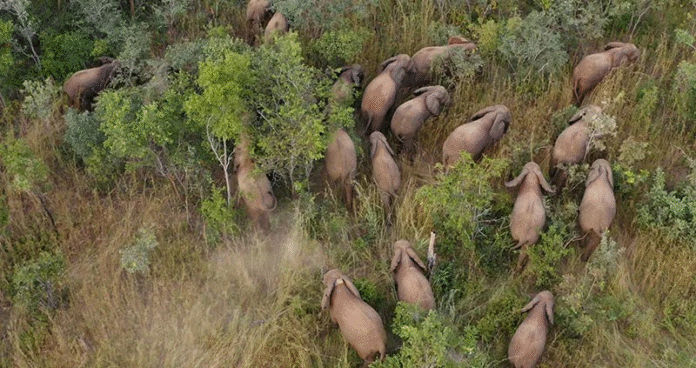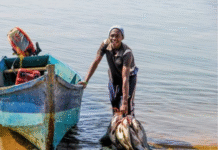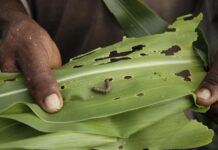Illustrative Image: Impact of Wildlife Trade Restrictions on Iconic Species in Southern Africa: Law Enforcement, Community Engagement, and Conservation Policy Insights
Image Source & Credit: Wild Africa
Ownership and Usage Policy
A recent study by Hiller, C., & ’t Sas‐Rolfes, M. (2025) titled “Systematic review of the impact of restrictive wildlife trade measures on conservation of iconic species in southern Africa” published in Conservation Biology reveals that effective law enforcement is crucial in determining conservation success.
“
Wildlife trade restrictions alone are insufficient; effective conservation requires law enforcement, community engagement, and socioeconomic integration.– Hiller, C., & ’t Sas‐Rolfes, M. 2025
The study examines how restrictive wildlife trade measures such as bans, quotas, and moratoriums impact the conservation of iconic species in the Southern African Development Community (SADC) region. Focusing on elephants (Loxodonta sp.), rhinoceroses (Ceratotherium simum, Diceros bicornis), lions (Panthera leo), and pangolins (Manis sp.), the study goes beyond ecological outcomes to assess the social, economic, and behavioural dimensions of conservation policy. At its core, the study seeks to determine whether trade restrictions truly aid conservation or whether, in some contexts, they may inadvertently hinder it. The findings reveal that trade bans and restrictions yield mixed results. While some species experienced short-term ecological recoveries following the introduction of bans, these gains were often undermined by negative socioeconomic impacts—particularly in rural communities where wildlife plays a vital role in livelihoods. In many cases, loss of income and economic opportunity heightened incentives for illegal hunting and poaching, ultimately counteracting conservation goals.
The review highlights that effective law enforcement is crucial in determining conservation success. Well-resourced, consistent enforcement efforts—especially those that increase the likelihood of detection—proved far more effective than imposing severe penalties. Moreover, demand reduction campaigns in consumer nations like China and Vietnam have shown promise in lowering demand for ivory and rhino horn, yet persistent illegal markets continue to erode progress. Importantly, the study identifies a significant research gap: the socioeconomic consequences of trade restrictions remain underexplored. Limited evidence suggests that blanket bans can disrupt rural livelihoods, food security, and social stability, particularly in regions where wildlife-based economies are central to development. Overall, Hiller and ’t Sas-Rolfes argue that trade restrictions are not universally beneficial. Instead, conservation strategies must be context-specific, integrating both ecological and human development objectives. In southern Africa—where many conservation frameworks are grounded in sustainable use models—rigid trade bans may be counterproductive unless they are coupled with strong enforcement, community incentives, and socioeconomic support mechanisms. The study ultimately calls for balanced, evidence-driven policies that recognize the intricate links between wildlife conservation, human welfare, and economic sustainability.
How the Study was Conducted
The authors employed a systematic review using the PRISMA framework to evaluate the impact of wildlife trade restrictions in Southern Africa. They developed a custom analytical framework assessing input variables (trade bans, quotas, and enforcement) and outcome variables, including direct conservation effects, indirect impacts (poaching and public attitudes), and socioeconomic outcomes (livelihoods and GDP).
Their literature search (1970–2020) spanned peer-reviewed databases, gray literature, and Google Scholar, focusing on SADC countries and species like elephants, rhinos, lions, and pangolins. From 6,277 publications, 46 studies met strict inclusion criteria for valid, evidence-based analysis.
Using qualitative thematic analysis, studies were grouped by species, country, and intervention type, revealing key themes such as law enforcement, demand reduction, and livelihood impacts. The review provides a comprehensive synthesis of how wildlife trade restrictions affect both biodiversity conservation and socioeconomic systems in the region.
What the Authors Found
The authors found that wildlife trade restrictions in southern Africa have mixed and context-dependent effects: while short-term conservation gains are possible, especially with international trade bans, long-term success depends heavily on effective law enforcement, community engagement, and complementary demand-side measures. Restrictions alone are often insufficient, and neglecting socioeconomic impacts or the disruption of illegal networks can undermine conservation goals.
Why is this important
Conservation Isn’t One-Size-Fits-All: Many global policies—like CITES trade bans—are designed with broad goals in mind. But southern African countries often favor sustainable use models, where wildlife is managed as a renewable resource. This study shows that blanket trade restrictions can clash with local realities, potentially undermining conservation efforts rather than helping them.
Local Communities Are Central to Success: Wildlife conservation doesn’t happen in a vacuum. It affects—and is affected by—rural livelihoods, cultural practices, and economic needs. The study highlights that ignoring these factors can lead to unintended consequences, like increased poaching or loss of community support for conservation.
Trade Bans Alone Aren’t Enough: The review found that trade restrictions only work when paired with strong enforcement, community engagement, and demand reduction. Without these, bans may fail to protect species or even worsen the situation by driving trade underground.
Evidence-Based Policy Is Essential: By systematically reviewing 50 years of research, the authors provide a data-driven foundation for future policy decisions. This helps governments, NGOs, and international bodies avoid repeating ineffective strategies and instead invest in what works.
What the Authors Recommended
- The authors emphasise combining supply-side measures (laws, quotas, protected areas), transaction-chain interventions (intelligence-led enforcement, disrupting trafficking networks), and demand-side actions (legal deterrents, public campaigns) to address the full wildlife trade chain.
- The study advocates strengthening enforcement and monitoring inside protected areas, improving institutional capabilities for prosecution and convictions, and enhancing early detection systems.
- Collaborate with communities in and around wildlife areas, support their role in stewardship, and ensure conservation policies do not undermine rural livelihoods.
- Furthermore, implement rigorous impact evaluations, adopt counterfactual and context-sensitive research approaches, and address knowledge gaps, particularly regarding socioeconomic effects and criminal networks.
- In addition, the authors suggest recognizing the value of locally governed sustainable wildlife economies and avoiding imposing restrictions that conflict with local management unless backed by strong evidence.
















 The African Research (AR) Index is a comprehensive scholarly directory and database focused explicitly on journal publishers that publish and disseminate African research.
The African Research (AR) Index is a comprehensive scholarly directory and database focused explicitly on journal publishers that publish and disseminate African research.

